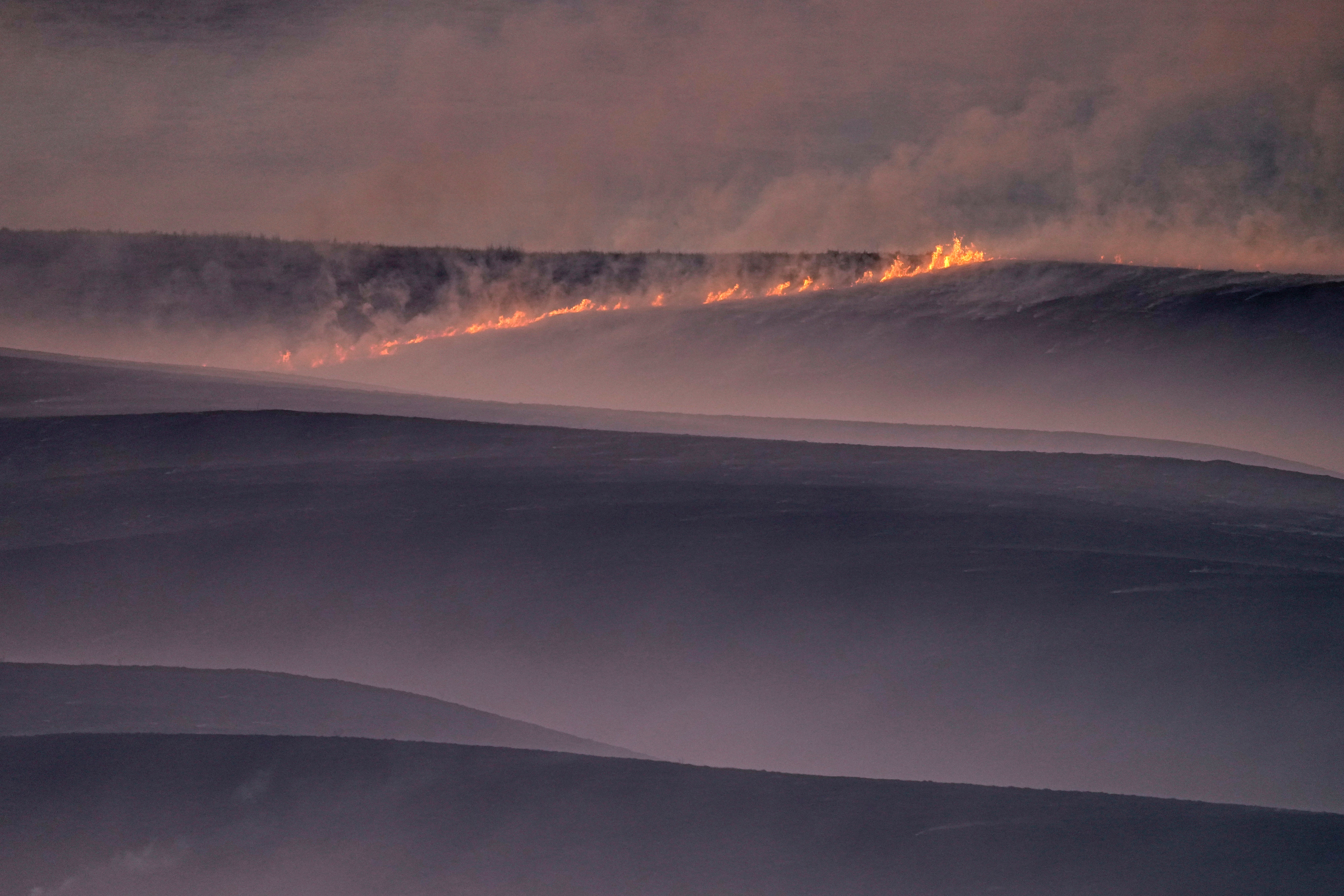EXPLAINER: What is a derecho?
The National Weather Service’s Storm Prediction Center says tornadoes and thunderstorms that struck the Great Plains and upper Midwest on Dec. 15 were the result of a rare event called a derecho

Your support helps us to tell the story
From reproductive rights to climate change to Big Tech, The Independent is on the ground when the story is developing. Whether it's investigating the financials of Elon Musk's pro-Trump PAC or producing our latest documentary, 'The A Word', which shines a light on the American women fighting for reproductive rights, we know how important it is to parse out the facts from the messaging.
At such a critical moment in US history, we need reporters on the ground. Your donation allows us to keep sending journalists to speak to both sides of the story.
The Independent is trusted by Americans across the entire political spectrum. And unlike many other quality news outlets, we choose not to lock Americans out of our reporting and analysis with paywalls. We believe quality journalism should be available to everyone, paid for by those who can afford it.
Your support makes all the difference.Multiple tornadoes and thunderstorms that struck the Great Plains and upper Midwest on Dec. 15 were the result of a rare event called a derecho, according to the National Weather Service’s Storm Prediction Center. It was the first on record in December in the United States
WHAT IS A DERECHO?
A derecho is often described as an inland hurricane.
According to the National Weather Service the term comes from the Spanish word “derechos” to mean “direct” or “straight ahead" and was first used in 1888 by a chemist and professor of physical sciences.
The storm has no eye and its powerful winds come across in a line. That can cause widespread overall damage and smaller pockets of severe damage.
Ryan Maue, a private meteorologist in the Atlanta area and a former chief scientist for the National Oceanic and Atmospheric Administration said a derecho can develop from a series of separate storms, usually carrying hail and strong winds, that combine and build into a larger bowing complex.
The term “bow” describes how it appears on radar.
When that happens, the system “can subsist on its own, it will continually fuel itself,” Maue said. “It can cause tremendous damage with straight-line winds.”
HOW OFTEN DO THEY OCCUR?
Derechos are relatively rare events, and in the U.S. are more likely to occur in the Corn Belt, an area that ranges from Minnesota and Iowa south and eastward toward the Ohio Valley, according to the National Weather Service.
They’re more likely to occur from May through August, particularly during periods of high heat — making the December derecho so uncommon.
“The climatology of derechoes depends on the location and season, but if you consider the entire US (east of the Rockies), then you'll usually see one or two, possible more per year depending upon the weather patterns,” Maue said.
WHAT DAMAGE CAN IT CAUSE?
A 2020 derecho that traveled from eastern Nebraska across Iowa and parts of Wisconsin and Illinois reached wind speed of a major hurricane. The National Weather Service's Storm Prediction Center reported winds approaching 100 miles per hour (161 kilometers per hour) in multiple places. In Cedar Rapids, Iowa, residents emerged from their homes to find an estimated 100,000 trees had been snapped or torn out of the ground.
A 2009 storm dubbed a Super Derecho by the National Weather Service traveled from western Kansas to eastern Kentucky. It caused several deaths and injuries and more than $500 million in damages by the time it had traveled more than 1,000 miles (1,609 kilometers).
A 2003 derecho traveled from Arkansas through several southern states including Alabama, Georgia and South Carolina. Two people died and 11 were hurt.
Last week's storm system spawned at least 45 tornadoes and caused widespread damage. Five deaths have been blamed on the storms.
ARE THERE DIFFERENT TYPES OF DERECHOES?
Yes. The August 2020 storm system was the result of what is known as a progressive derecho. The Dec. 15 event was a serial derecho.
The weather service said a progressive derecho is fueled by a hot and moist environment with relatively strong winds aloft. Serial derechos are produced by storms with strong winds that bow outward, the service said. They sweep across an area both long and wide, driven by the presence of very strong winds in the atmosphere.
The unprecedented December warm spell included temperatures that rose to 70 degrees Fahrenheit (21 degrees Celsius) as far north as Wisconsin, creating evening temperatures that weather historian Chris Burt compared to that of a “warm July evening.”